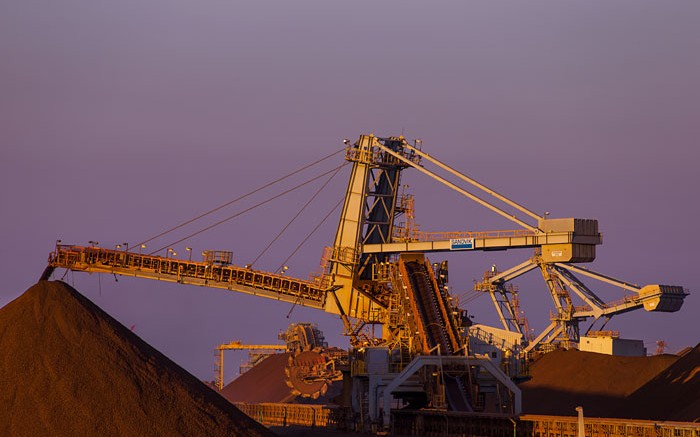VANCOUVER — Cost cutting by the majors has been a painful necessity over the past few years, and Rio Tinto (NYSE: RIO; LSE: RIO) is no exception. But based on the results from the first half of 2014, the mega-miner’s focus on capital spending control is already paying off at its bottom line.
Over the past two years Rio has achieved US$3.2 billion in sustainable operating cash-cost improvements, and exceeded its US$3-billion capital savings target six months ahead of schedule. The company’s efforts resulted in a six-month earning of US$5.1 billion, or US$2.77 per share. The result marks a 21% increase in underlying earnings compared to the same period in 2013, with Rio boosting cash flows from operations by 8% to US$8.7 billion.
For 2014, Rio Tinto has reduced its capital expenditures by US$2 billion to US$9 billion.
The company shipped record iron-ore volumes, set production records for iron ore and thermal coal, and delivered a strong operational performance in copper, while also decreasing its net debt by US$1.9 billion in the first half to US$16.1 billion. That compares with $22.1 billion in debt at the end of June 2013.
“Our outstanding half-year performance reflects the quality of our world-class assets, our program of operational excellence and our ability to drive performance during a period of weaker prices. These results show that our current strategic and management focus is making a meaningful contribution to cash-flow generation,” CEO Sam Walsh noted in the release. “We are confident [our] low-cost, diversified portfolio will continue to generate strong and sustainable cash flows over the coming years.”
In terms of cost reductions Rio hit its full-year target ahead of schedule, and expects another US$1 billion in operating-cost improvements by the end of 2015. The company’s cost savings are expected to drop to US$250 million during the second half of 2014 owing to maintenance activities at its Kennecott Utah copper smelter. In 2015 the pace of cost savings is expected to increase again, to US$750 million.
Iron-ore growth was driven by high-quality Australian Pilbara blend products, which command attractive prices. Higher copper volumes came from improved grades and concentrator recoveries at Kennecott Utah Copper and the ramp-up at Oyu Tolgoi. Sales reportedly exceeded production at Oyu Tolgoi, as logistics commissioning issues were resolved, which accelerated shipments.
Despite the year’s strong start, Rio’s earnings were impacted by modernization at its Kitimat aluminum operations in B.C., which resulted in an US$800-million impairment charge. First production from Kitimat is expected during the first half of 2015.
In terms of guidance Rio remains on track throughout its diversified portfolio. The company expects to produce 295 million tonnes of iron ore during the year from its operations in Australia and Canada, as well as 3.4 million tonnes of aluminum and 300,000 tonnes of copper.
On a global market scale Rio expects China’s annual growth to end up near the official forecast of 7.5% due to targeted expansionary policies. The company estimates that during the second half of 2014, China’s crude steel production could stay at the current level of 830 million tonnes annually, with steel demand expected to grow by 4% over the previous year. Rio notes that although copper supply is expected to ramp up over the coming year, the red metal’s long-term fundamentals are underpinned by the complexity and high cost of new projects.
BMO Capital Markets analyst Tony Robson — who has an “outperform” rating on Rio’s stock — noted that the company’s results over the first half of the year “surpassed” BMO Research and analyst consensus expectations.
“The earnings beat appears to be predominantly on lower-than-expected costs,” Robson wrote on Aug. 7. “CEO Sam Walsh stressed the company’s commitment “to deliver materially increased cash returns to shareholders,” which suggests to BMO Research that Rio Tinto is to repay excess capital next February (potentially as much as US$3 billion), in addition to a higher base dividend.”
Shares have traded between US$56.39 and US$58.65 over the past 52 weeks, and dropped US8¢ to close at US$57.09 at press time.
The company has 1.4 billion shares outstanding for a $106-billion market capitalization.


Be the first to comment on "Rio Tinto’s profits improve as hard-won cost savings take hold"